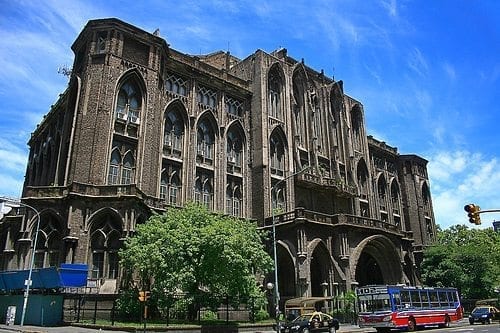Building Myths of Buenos Aires
Every town has its ghost stories, and Buenos Aires is no different! Here are 5 interesting legends about different buildings around Buenos Aires:
1) El Palacio de los Bichos (Campana 3220, Villa del Parque)- Far off the beaten path of your average visitor to Buenos Aires in the neighborhood of Villa del Parque is a magnificent 5 story house constructed in the early 20th century, right next to the train tracks. The name comes from the quantity of gargoyle-like statues, reliefs, and animals that were used to decorate the building (it’s unclear whether these are meant to be inside the building or if they were on the building’s exterior and were later removed, as they do not appear in recent photos). As the story goes, a man by the name of Giordano had the house built for his daughter Lucía, who was engaged to a violinist by the name of Ángel Lemos. They were married in that very building and spent the evening celebrating with their friends and family. They were meant to be driven off in a carriage that night, but instead of waiting for them in front of the house, it was parked on the other side of the train tracks. As they crossed the tracks, they were hit by a train and killed. Another version tells that they got safely into the carriage, but that the carriage was hit by the train as it crossed the tracks. The devastated father reportedly locked up and abandoned the house, returning to Italy. After this disaster, rumors of a ghost wandering about house and the train tracks could sometimes be seen, as well as strange lights in the house, shouting, and dancing ghosts.
However, one historian believes that all of this really is nothing more than a story and that the house was actually built as a brothel – but the neighbors objected and the house was closed. Today, the building is used for apartments and a spa, and is so well-known that it’s included in the coat-of-arms of the neighborhood of Villa del Parque.
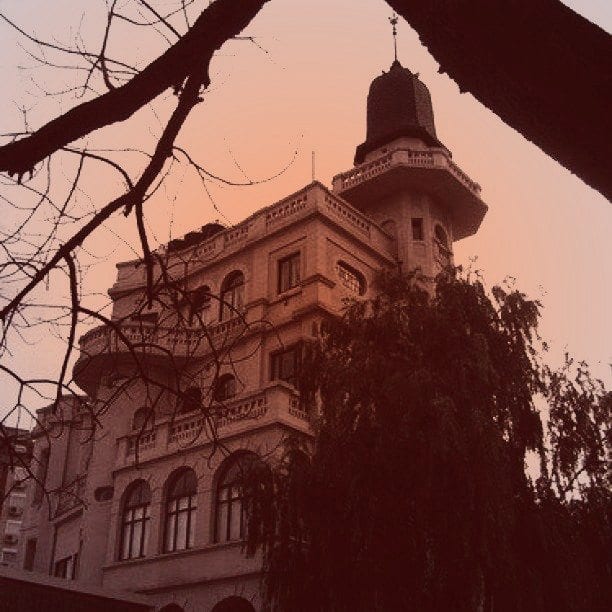
2) Edificio Kavanagh (Calle Florida 1065, Retiro) – This Art Deco and Modernist skyscraper was commissioned by heiress Corina Kavanagh in 1934 and construction was finished by 1936. At the time of its construction it was the highest reinforced concrete structure in the world at 120 m (394 ft).
And as interesting as I’m sure you find that, the real story behind this building is the legend that the shape of the building was meant to be a form of revenge. It is said that the Kavanagh family was wealthy, but not aristocratic, and that Corina fell in love with the son of the both wealthy and aristocratic Anchorena family. The Anchorena family lived in what is today known as the Palacio San Martín, on the other side of the Plaza San Martín, and had built a church on the site next to the Kavanagh Building. The family disapproved of the engagement, so Corina demanded that the architects block the church from the palace’s view as revenge on the Anchorena family. Keep in mind that this was no small-town church, but rather a cathedral, the Basílica del Santísimo Sacramento.
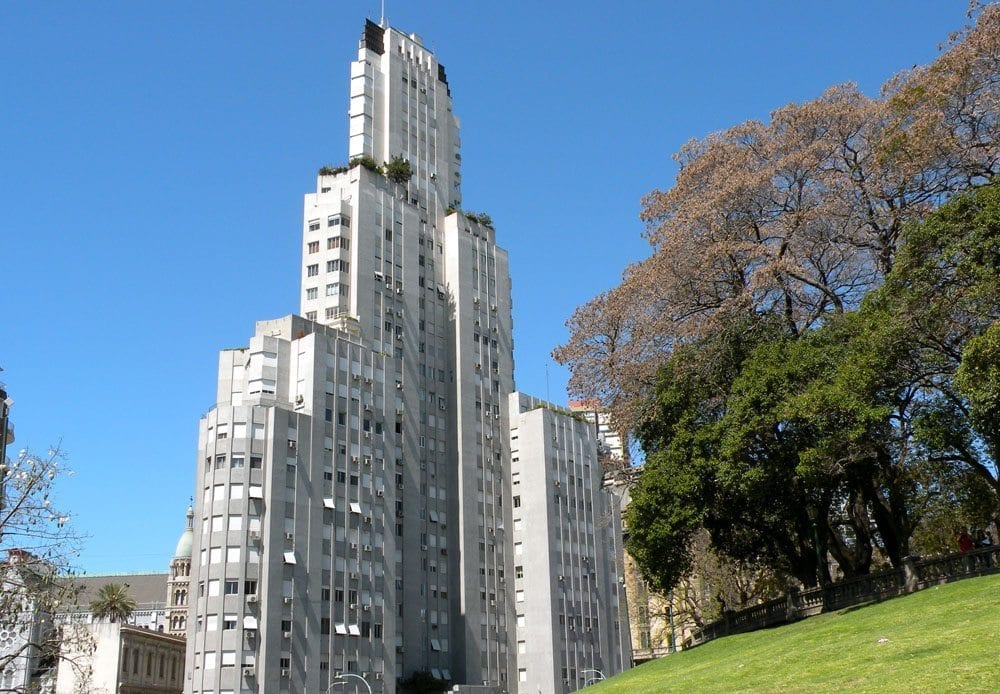
3) Facultad de Ingeniería – Sede Las Heras (Av. Las Heras 2214, Recoleta) – There are some unique stories surrounding this branch of the School of Engineering of the University of Buenos Aires. While the School of Engineering actually has three branches located throughout Buenos Aires, this one has the most interesting history. Here’s some more background information about what looks an awful lot like a church rather than a university building.
There are many stories surrounding this neo-gothic building because its construction is in considerable contrast to a city full of French-style architecture and also because it gives the impression that something is missing – and indeed, about half of the building isn’t there! Many say that the architect made crucial mistakes in his calculations, and that they were unable to add more to the building or else it would come crashing down (for a school of engineering, this seems like a good story to encourage students to check their work!) These apparent structural problems are also blamed for the walls never being covered in plaster. Some darker versions of this story assert that the architect committed suicide upon realizing he had erred in the calculations, leaving the project unfinished.
In truth (sorry to spoil the fun!), it is that the architect Arturo Prins began the project in 1910, and that the building was put into use when it was only half-completed in 1925. That is, what you see today was all done, but the great towers that you can see in the sketch had not yet been built. However at that point, a lack of funds and economic crises set back the continuation of Prins’ work, and ultimately the construction was suspended in 1938. Prins passed away from natural causes one year later at age 62.
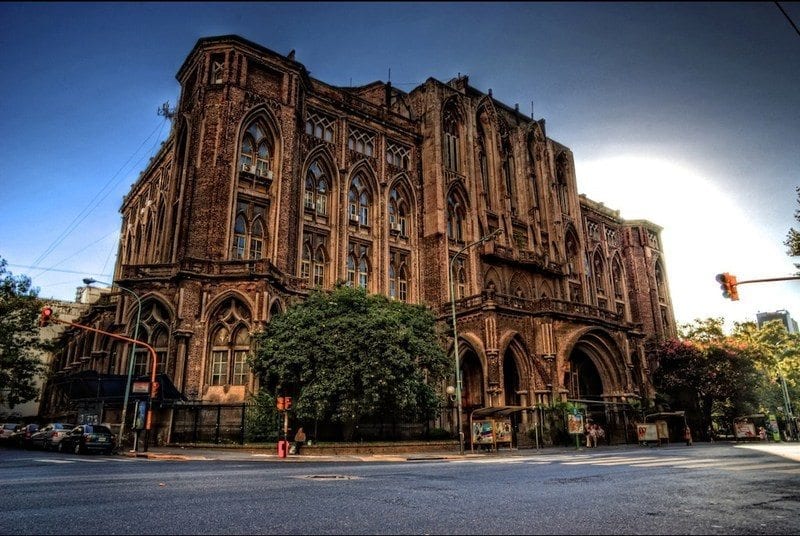
4) Iglesia Santa Felicitas (Isabel la Católica 520, Barracas) – At the age of 16, Felicitas Guerrero married Martín de Alzaga. They had a child together, who died at the age of six, and one year later Felicitas became a widow at the age of 24, and many suitors sought her hand. While Felicitas initially had a brief courtship with a man by the name of Enrique Ocampo, she later came to favor another, Manuel Sáenz Valiente. This change in her affections filled Ocampo with jealousy. Ocampo’s confrontation of Felicitas turned violent, and he accidentally killed her. Some say she was shot on the 29th and others on the 30th, but all versions of the story agree that she died on January 30, 1872. Felicitas’ parents had this church built to commemorate their daughter at the place where she was killed.
Today, it is said that her ghost wanders about the church. It is believed that to touch her statue brings disgrace and misfortune, but touching the gate at the entrance and tying a white handkerchief or ribbon to it will bring you true love.
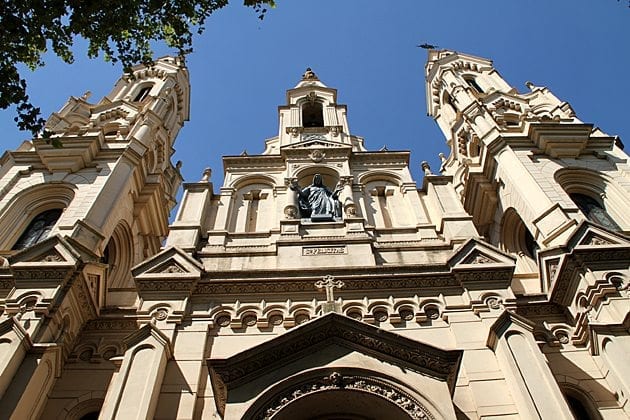
5) La Casa de los Leones (Montes de Oca 110) – The story of this house is that during the late nineteenth century, it’s owner at the time Eustoquio Díaz Vélez liked to live an extravagant and luxurious lifestyle and was known for keeping exotic animals (such as lions, for example) as pets. At night these animals were permitted to roam throughout the gardens and during the day were kept in cages underneath the house. Whenever there was a party at night, the animals were kept in their cages (presumably because the hosts didn’t want the lions to eat their guests). When Díaz Vélez’s daughter became engaged, a large party was held to honor the happy couple and the impending nuptials. All of the lions were locked in their cages, but one door wasn’t shut properly and one of the lions managed to escape. The lion attacked and killed the daughter’s fiancé. The father was able to shoot and kill the lion, but shortly after losing the love of her life, the daughter committed suicide.
After this, it’s said that the father may have tried to sacrifice the lions in order to bring his daughter back to life. But he still loved the lions and chose to build statues of the lions in the gardens, including a statue of a lion attacking a man. The house and the lions are still there, but today the house is used for VITRA (a foundation that works to provide education, work, and social opportunities of the disabled).
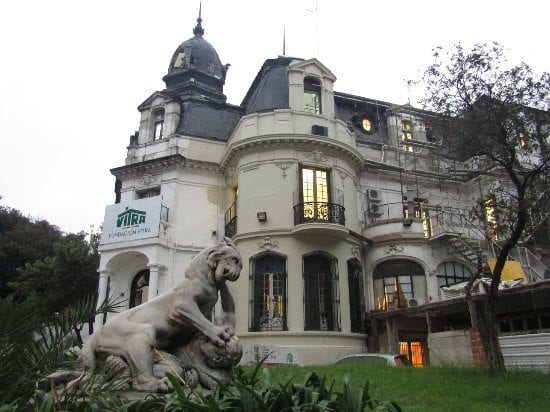
Also Read: Buenos Aires Ghosts Stories
If you want to learn more about our Spanish School in Argentina or Buenos Aires visit Vamos Spanish Academy at Viamonte 1516, Buenos Aires, Argentina
Volunteer Abroad in Argentina restoring old buildings.




